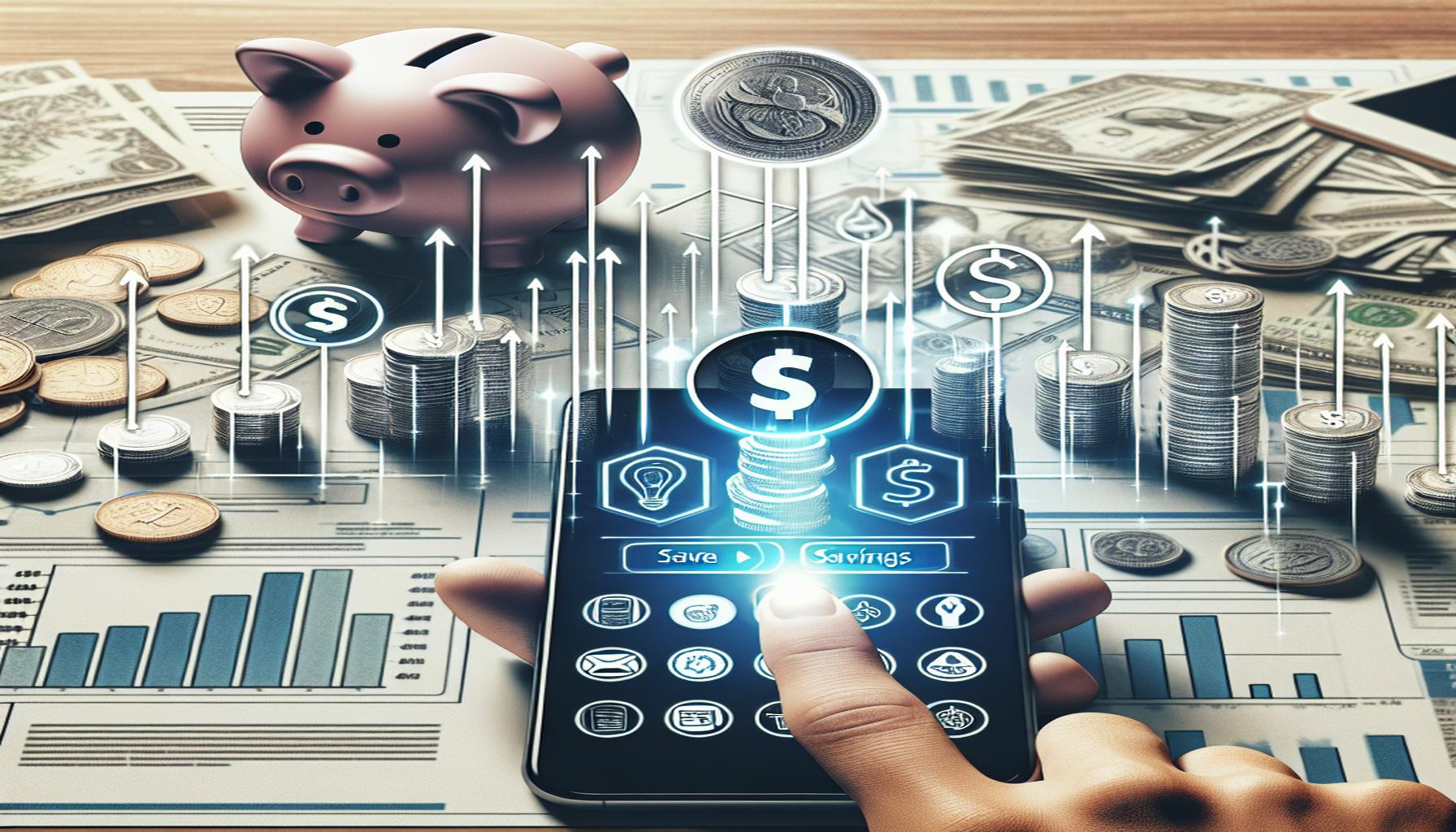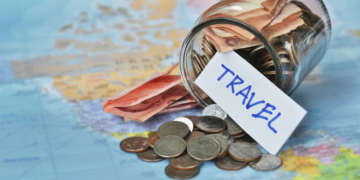How to use personal finance apps to save more money

Understanding Personal Finance Apps
In today’s digital age, managing finances has never been easier. With the help of personal finance apps, individuals can take charge of their money and enhance their savings. These tools are designed to simplify budgeting and tracking expenses, making financial literacy more accessible to everyone, regardless of their financial knowledge.
Key Features of Personal Finance Apps
Many apps offer a variety of features that can help you save more effectively:
- Budgeting Tools: Set monthly limits for different spending categories, such as groceries, entertainment, and transportation. For example, if you allocate $300 for groceries, the app can notify you when you’re nearing this limit, helping you stay on track.
- Expense Tracking: These apps can automatically categorize and record your expenses by linking to your bank accounts or credit cards. If you spend $50 at a restaurant, the app can automatically file that expense under dining out, making it easy to see where your money is going.
- Savings Goals: You can create specific savings targets, like saving for a new car or a vacation. The app can help you monitor your progress and motivate you by showing how much you’ve saved over time. For instance, if you aim to save $1,000 for a trip, the app can track your contributions each month.
- Investment Tracking: With features that allow you to monitor stocks, bonds, and other investments in one place, personal finance apps can help you keep a comprehensive view of your financial portfolio. You can receive updates on performance and even set alerts for price changes.
Using these features can lead to significant savings and better financial habits. However, finding the right app tailored to your specific needs is crucial. Here are several factors to consider when selecting a personal finance app:
- User Interface: Is it easy to navigate? A clean and user-friendly interface makes the experience smoother and encourages regular use.
- Integration: Does it connect seamlessly with your existing bank accounts and credit cards? This feature ensures that you can track your spending in real-time without manual input.
- Security: Is your information protected? Look for apps that use robust encryption technology and two-factor authentication to ensure your data remains safe.
By leveraging these apps, Canadians can build better financial habits. Whether you are saving for a vacation, paying off debt, or investing in your future, the right personal finance app can be a game changer. Take the time to evaluate your options and select an app that aligns with your financial goals. With the right tools at your disposal, mastering personal finance is within your reach.
Getting Started with Personal Finance Apps
Once you’ve selected a personal finance app that fits your needs, it’s time to start using it effectively to save more money. The key to maximizing the benefits of these apps lies in actively engaging with the features they offer. Here are some actionable steps to help you make the most of personal finance apps:
Set Up Your Budget
The first step to improving your financial situation is to create a detailed budget. Many personal finance apps have built-in budgeting tools that allow you to set limits according to your expenses. Begin by examining your monthly income and identifying fixed expenses, such as rent, utilities, and insurance. Next, allocate funds for variable expenses like groceries, clothing, and entertainment. This approach helps you understand where your money gets spent and where you may be overspending. Consider these tips:
- Be Realistic: When setting budget limits, be honest about your spending habits. If you regularly dine out, don’t set an unrealistically low budget for food. Calculate your average restaurant expenditure and adjust accordingly.
- Account for Non-Monthly Expenses: Include irregular expenses, such as car maintenance or seasonal purchases, in your budget for the year. This strategy prevents financial stress when these expenses arise unexpectedly.
- Review and Adjust Regularly: Life changes, and so should your budget. Review your budget monthly to see if you need to adjust categories or limits based on your actual spending. The app can quickly provide insights into overspending trends that you can address.
Track Your Spending
Tracking your spending is essential to understanding your financial behavior. After categorizing your expenses, use the app’s expense tracking feature to refine your spending habits. Here are some ways you can utilize this feature to save money:
- Review Spending Categories: Most personal finance apps show visual representations of your spending habits, such as pie charts or graphs. Regularly check these to identify areas where you might cut back.
- Identify Unnecessary Subscriptions: Some users are surprised to discover multiple subscription services they no longer use. Tracking allows you to cancel those that do not provide enough value, immediately freeing up funds for savings.
- Set Up Alerts: Many apps offer notifications for when you are nearing budget limits in particular categories. By receiving alerts, you can curb additional spending before it overshoots your budget.
By actively setting budgets and tracking expenses, you can gain a clearer picture of your financial situation. This clarity serves as a powerful motivator to save more. Harnessing these features improves your overall financial awareness, which is crucial for long-term saving and investment success. Remember, financial well-being is a journey, and consistent engagement with your personal finance app is a key part of that path.
Maximizing Your Savings with Personal Finance Apps
Once you’ve set your budget and are tracking your spending effectively, it’s time to utilize additional features offered by personal finance apps to enhance your savings strategy. These apps are equipped with tools designed to automate savings, track your financial goals, and even provide insights into your investment opportunities. Here are some steps to leverage these features for maximum financial benefit:
Automate Your Savings
One of the most effective strategies to increase your savings is automation. Many personal finance apps allow you to set up automatic transfers to savings accounts. Here’s how you can implement this:
- Set Up a Dedicated Savings Account: Open a separate high-interest savings account specifically for your financial goals. This makes it visually distinct from your everyday spending money, discouraging impulsive withdrawals.
- Define Your Savings Goals: Use the app’s goal-setting feature to clarify what you’re saving for—whether it’s a vacation, emergency fund, or down payment on a house. This adds a motivational aspect to your saving.
- Schedule Automatic Transfers: Designate a specific amount to be automatically moved from your checking account to your savings account on payday. By treating savings like a recurring bill, you can enhance your savings without needing to think about it regularly.
Utilize Cashback and Rewards Features
Many personal finance apps incorporate cashback and rewards programs that can further enrich your savings endeavors. Here’s how to take full advantage:
- Choose the Right Credit Cards: Some apps partner with financial institutions to offer cashback on purchases made with specific credit cards. Research which cards provide the best cashback rates in categories where you frequently spend, such as groceries or gas.
- Monitor Offers and Bonuses: Stay alert for any promotional offers available through the app. Often, users can earn additional cashback or rewards by making purchases at select retailers or fulfilling specific spending criteria.
- Link Loyalty Programs: If the app allows, link any loyalty programs you’re part of—like grocery or gas rewards programs. This integration can help you accumulate points or discounts that can be redeemed for future savings.
Gain Insights Through Reports and Analytics
Personal finance apps often provide analytics tools that can help you make informed financial decisions. Leveraging these insights is essential for improving your overall savings:
- Evaluate Spending Trends: Regularly review reports or summaries generated by the app that highlight your spending patterns over time. This analysis can uncover areas where spending is unnecessarily high, suggesting adjustments for better fiscal health.
- Assess Financial Health: Many apps offer a comprehensive financial health assessment, evaluating your net worth, debt-to-income ratio, and savings rate. Understanding these factors will give you a clearer picture of your overall financial position.
- Make Data-Driven Adjustments: After analyzing your spending habits and financial health scores, make informed decisions about necessary budget reallocations or savings goals based on real data, leading to more effective financial management.
By automating savings, taking advantage of cashback programs, and utilizing analytical tools within these apps, you can efficiently maximize your savings potential. Personal finance apps are more than just tools for budgeting; they can act as your personal finance coach, guiding you toward better financial habits and long-term savings success.
Conclusion
Utilizing personal finance apps effectively can significantly enhance your ability to save money and achieve your financial goals. By leveraging automation, you can ensure that savings are prioritized without requiring constant oversight or effort. This habit transforms savings into a seamless part of your financial routine. Additionally, engaging with cashback and rewards features can turn everyday spending into an opportunity for extra savings, making your purchases work for you.
Moreover, the data-driven insights these apps offer provide invaluable clarity on your financial habits. By regularly reviewing your spending patterns and overall financial health, you can identify areas for improvement and make informed adjustments to your budget. This proactive approach to financial management fosters a deeper understanding of your financial situation, empowering you to make choices that align with your financial aspirations.
In a nutshell, personal finance apps are not just tools; they can serve as your financial advisors. They can help you craft a disciplined savings strategy, enabling you to reach your goals—whether they involve buying a home, funding a dream vacation, or simply building a robust emergency fund. Embrace the wealth of knowledge and functionality these apps provide, and watch your savings grow while cultivating healthier financial habits.

Linda Carter is a writer and financial consultant specializing in economics, personal finance, and investment strategies. With years of experience helping individuals and businesses make complex financial decisions, Linda provides practical analyses and guidance on the World Information Now platform. Her goal is to empower readers with the knowledge needed to achieve financial success.






